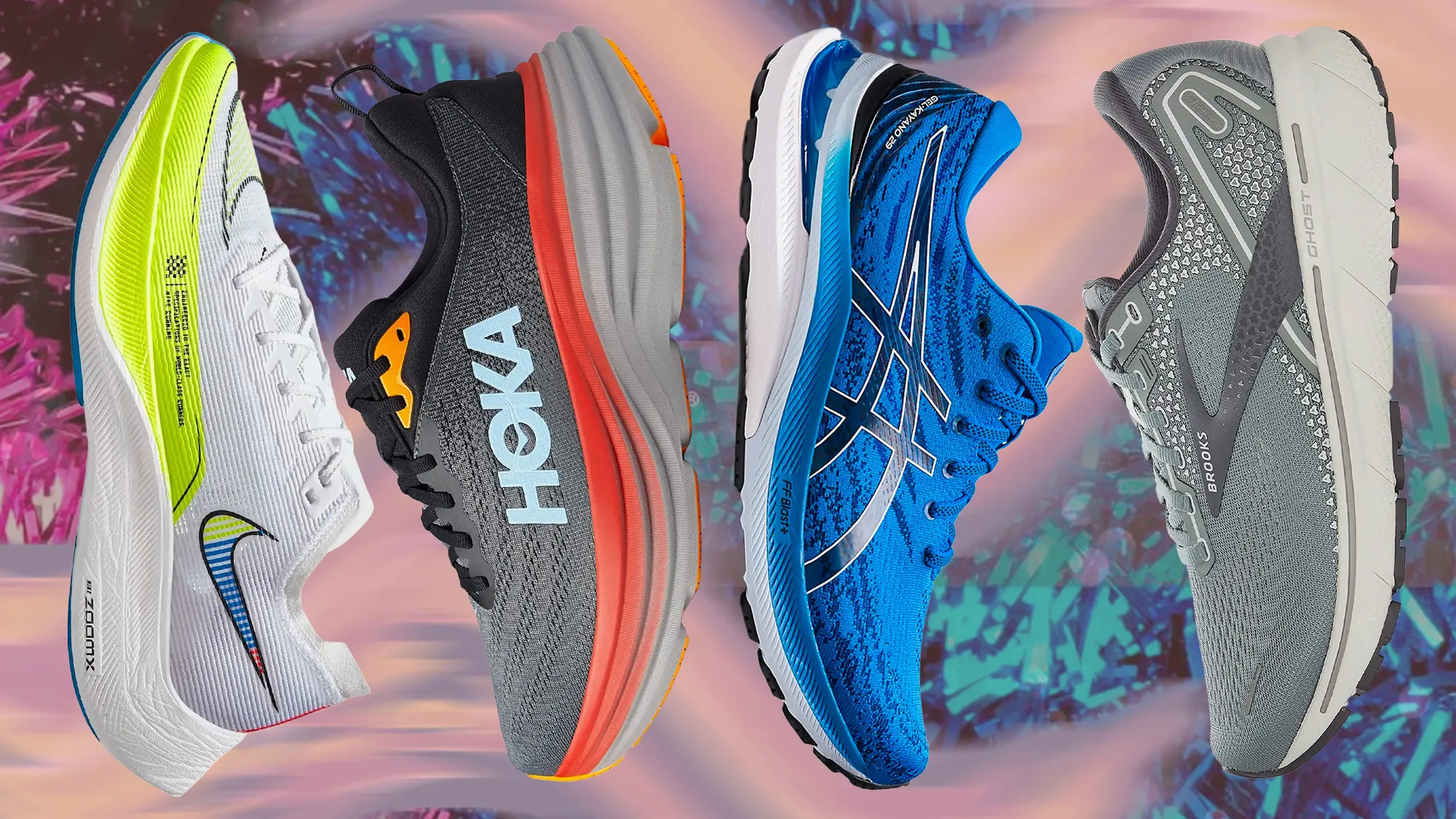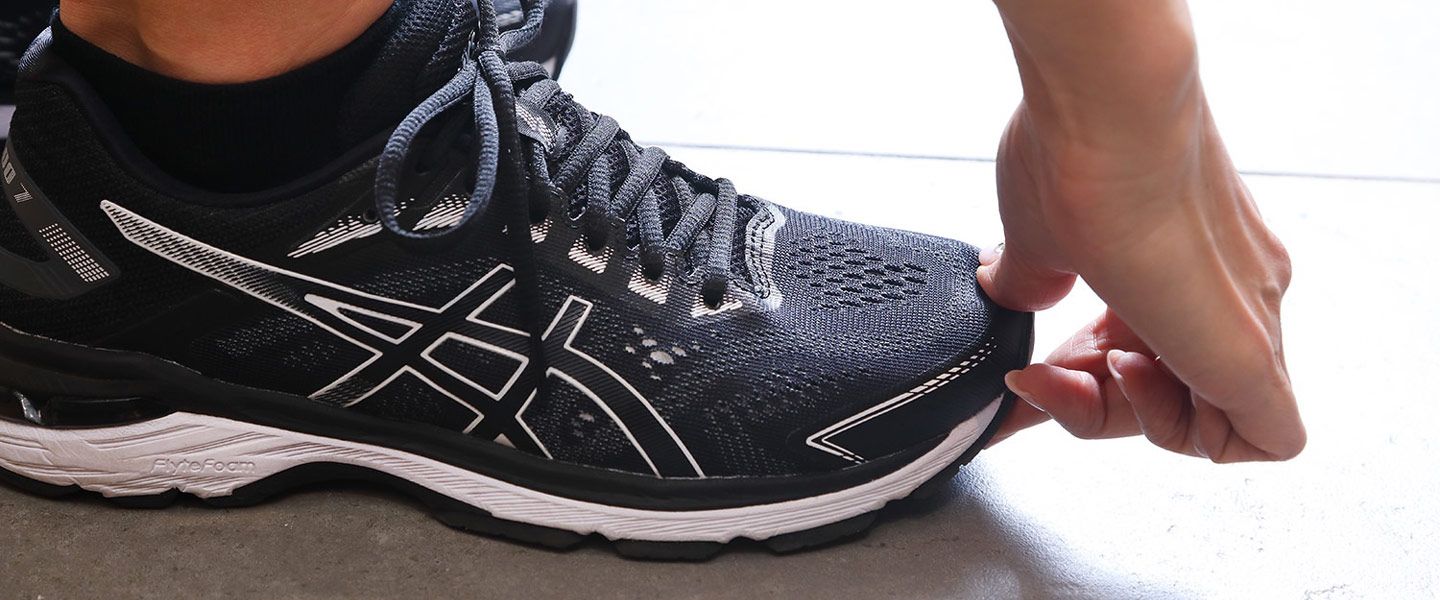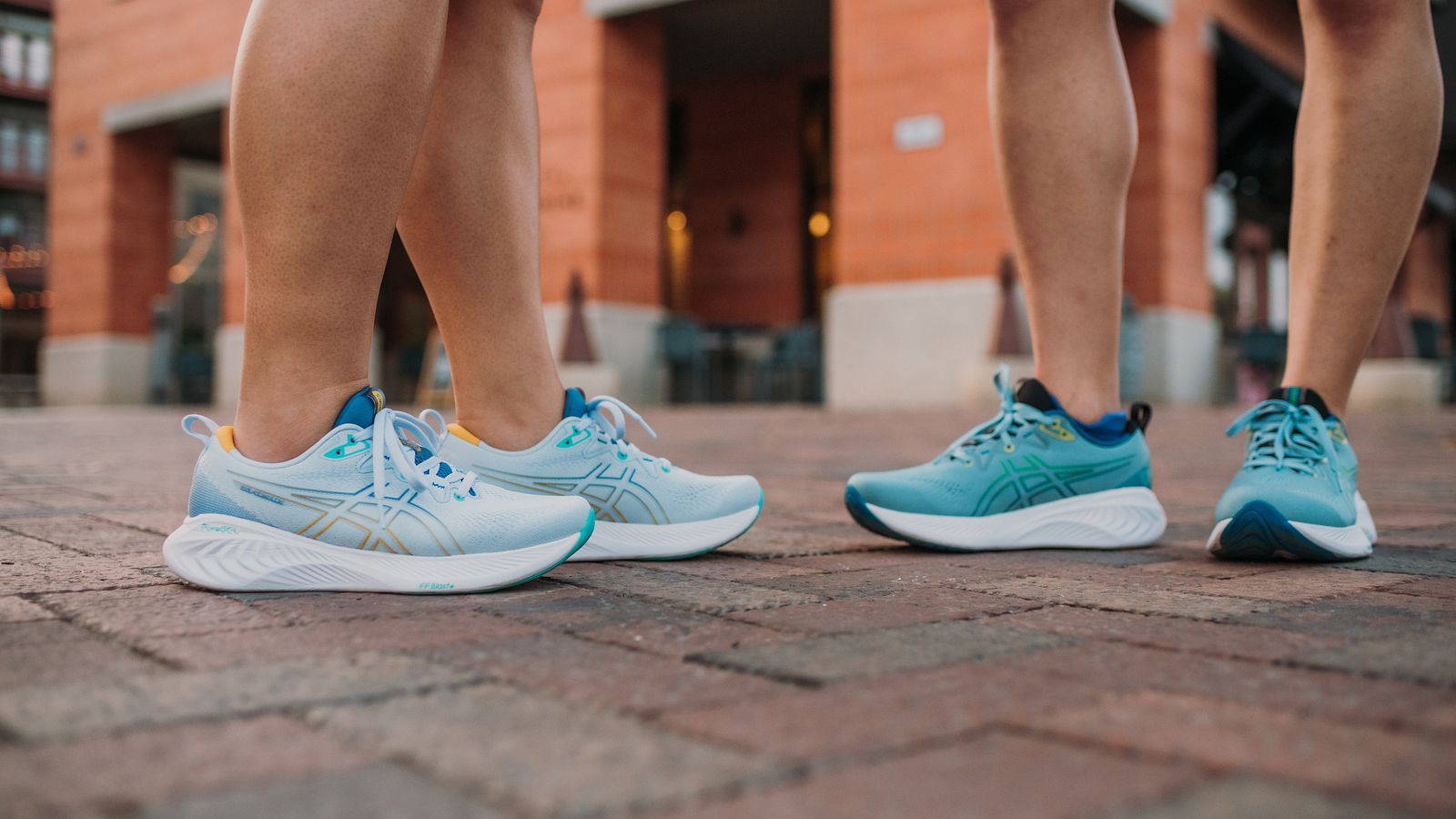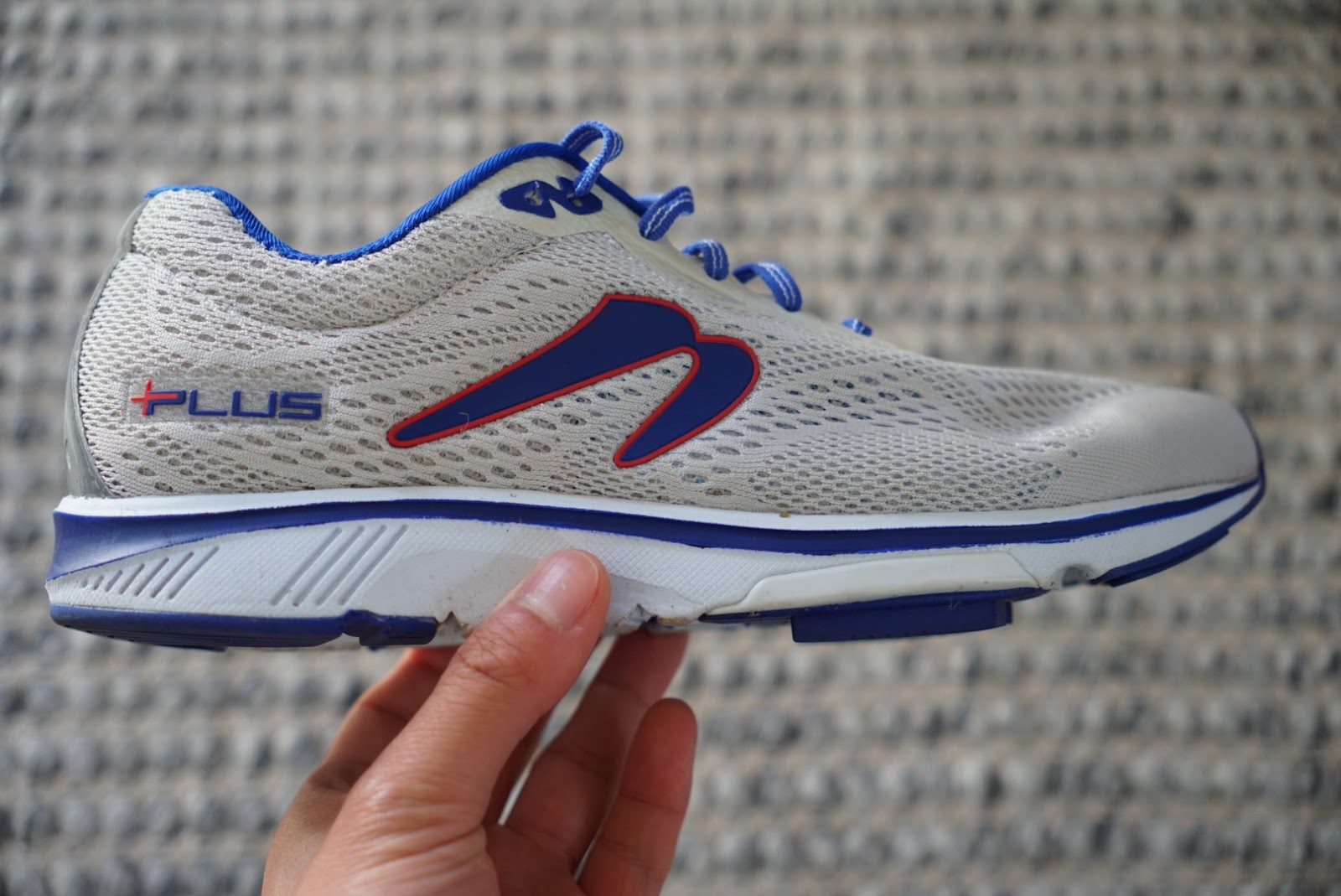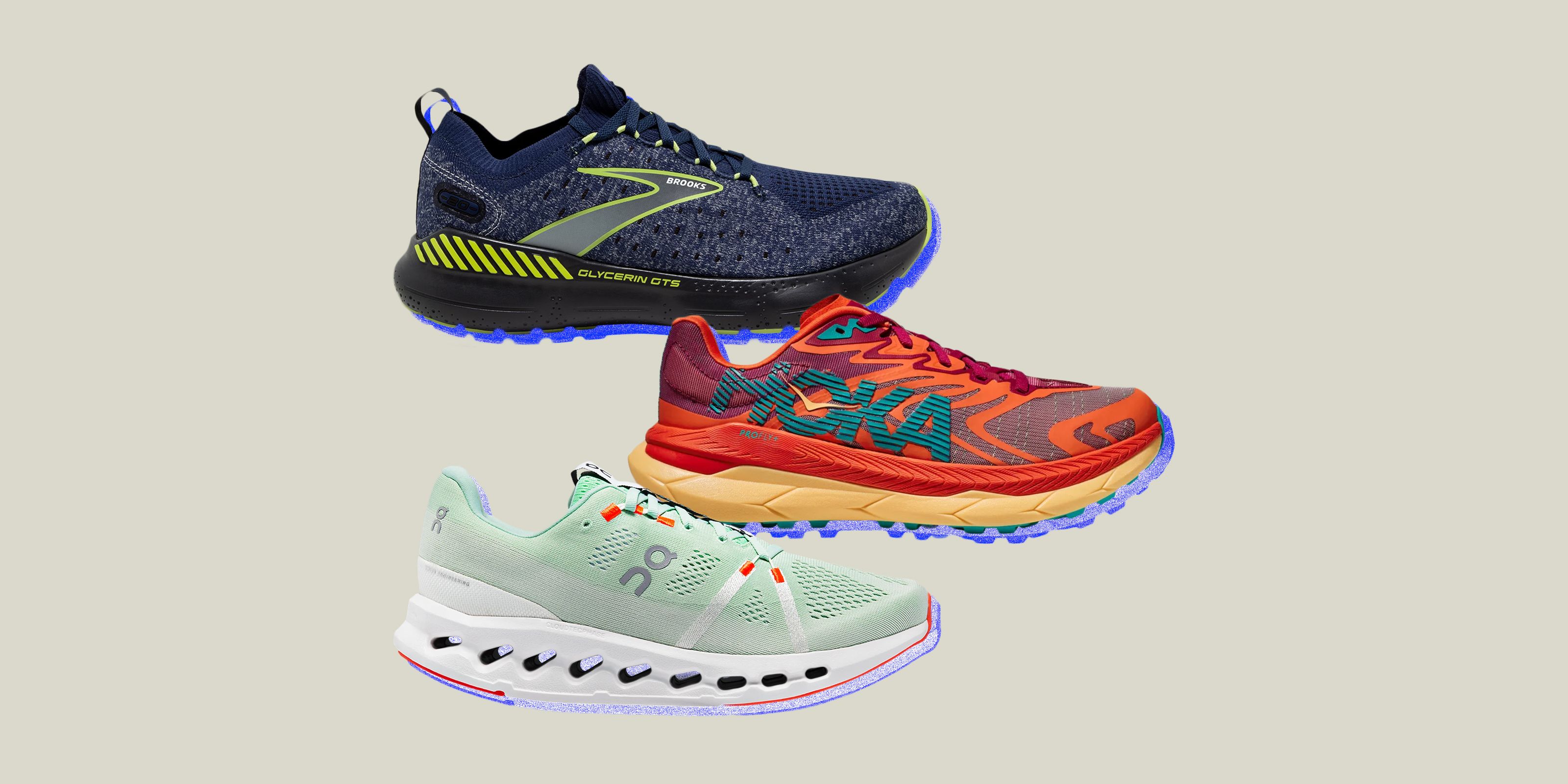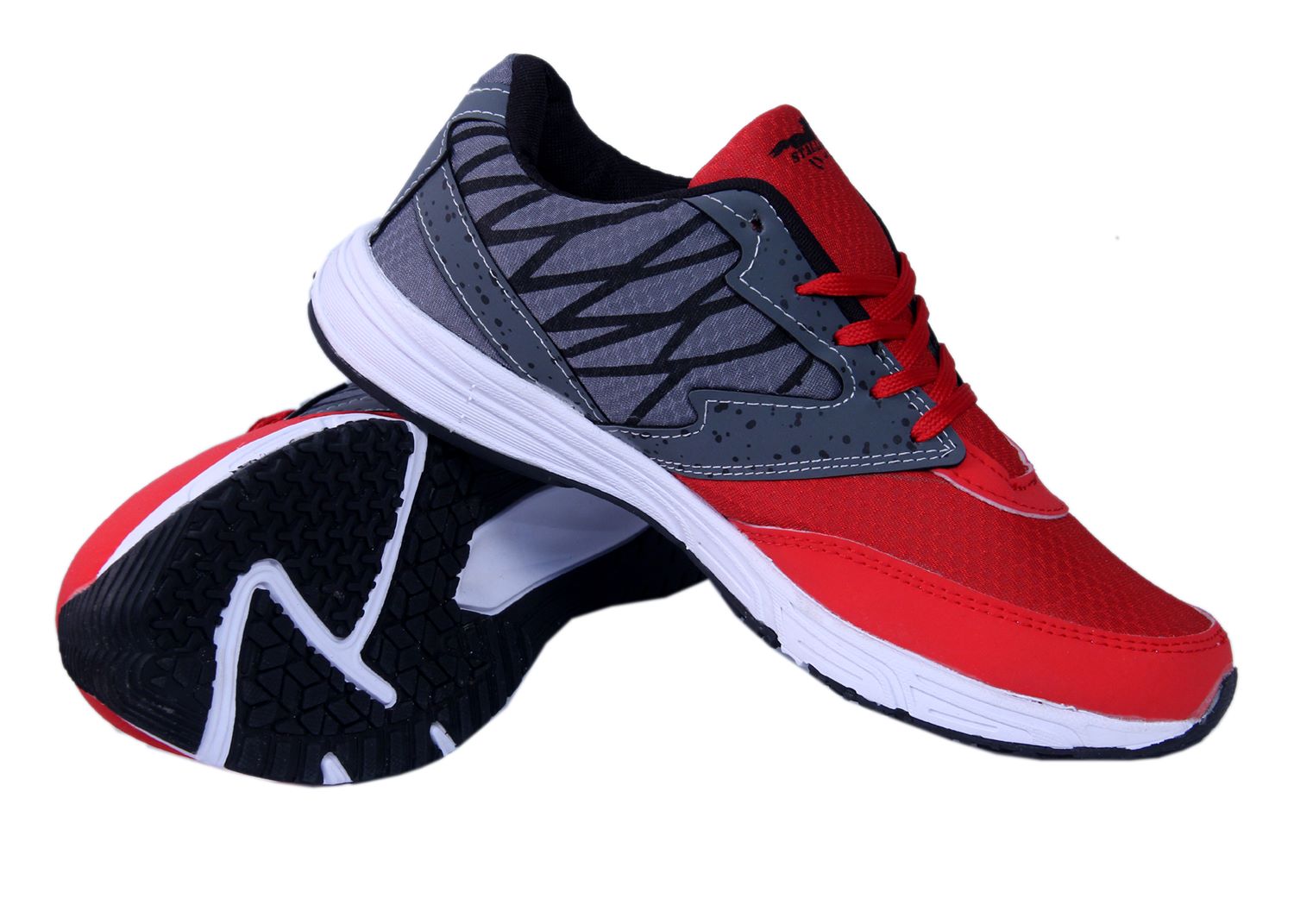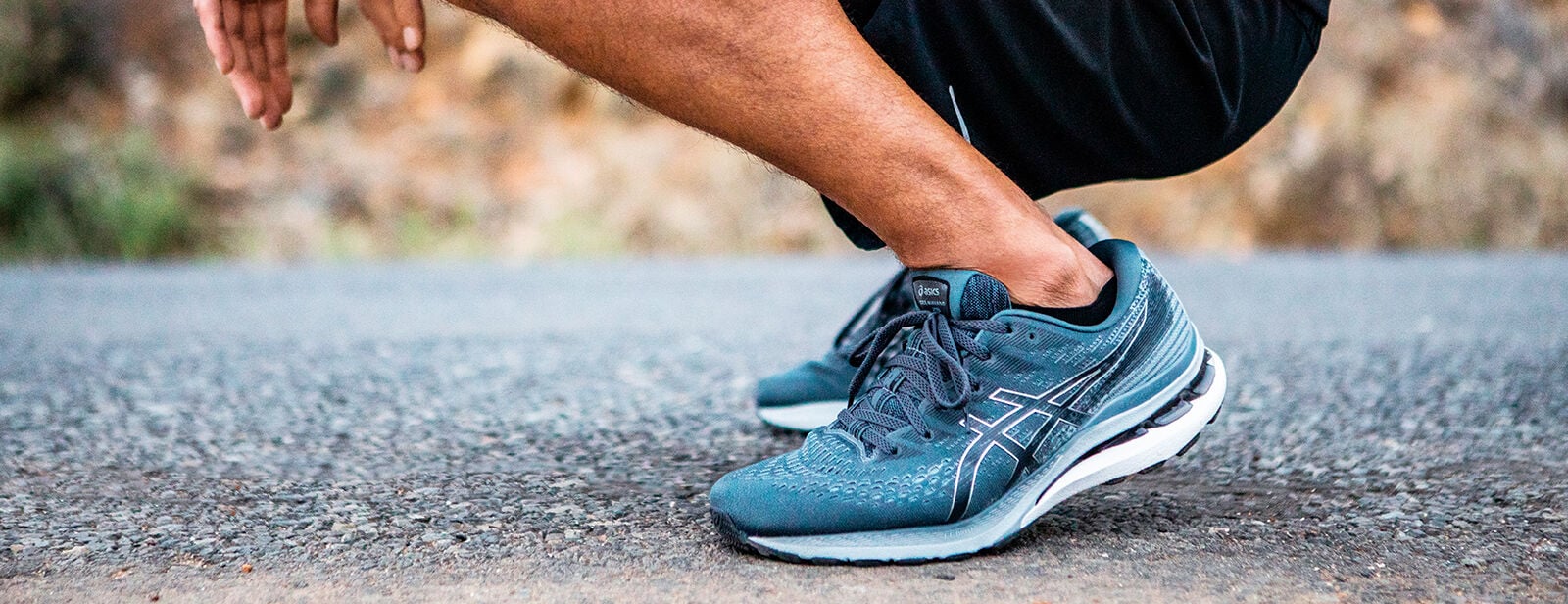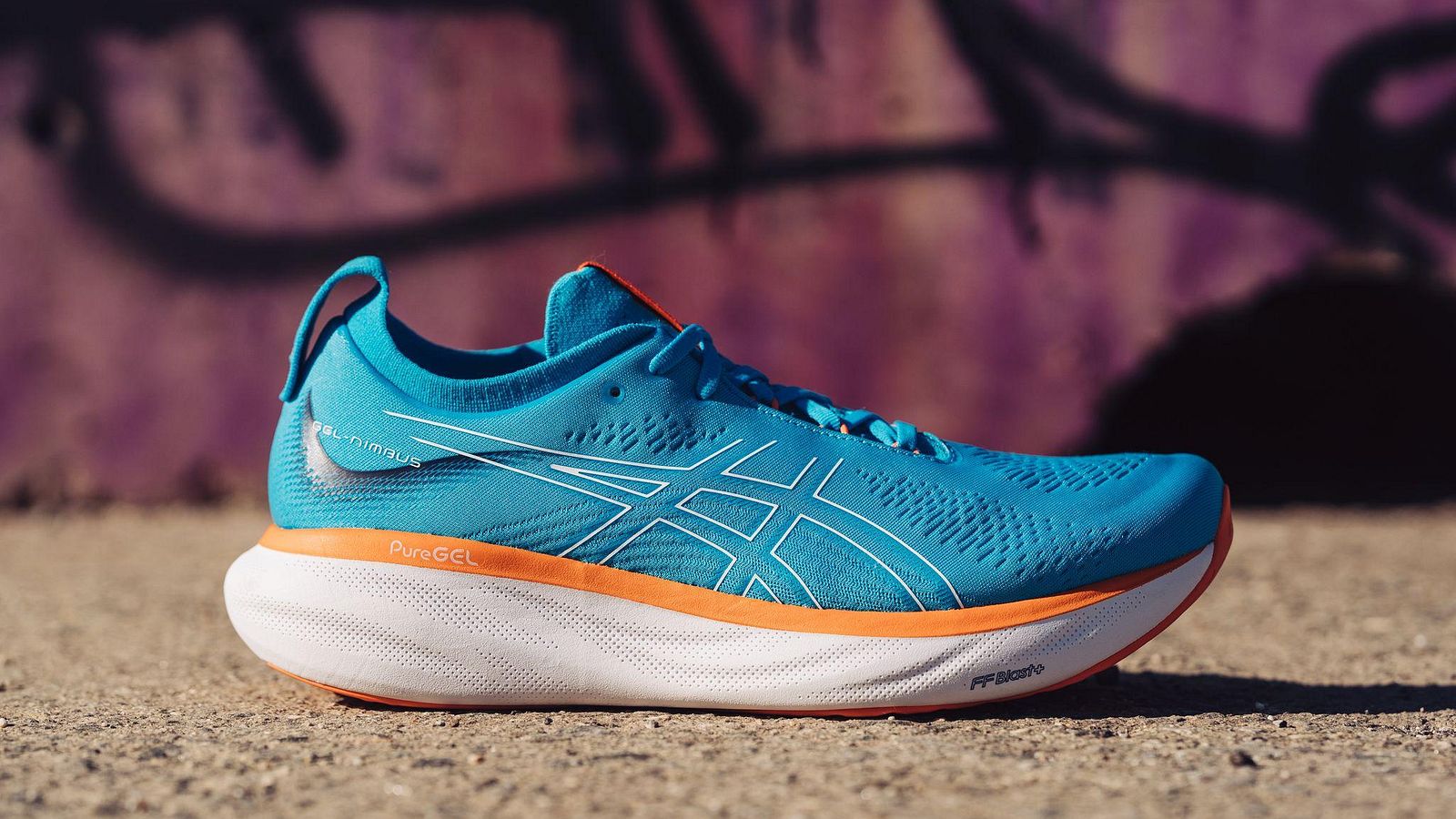

Brands
How Many Miles Do Asics Running Shoes Last
Modified: January 2, 2024
Discover the durability of different running shoe brands. Find out how long Asics running shoes last and make informed decisions for your next pair.
Introduction
Welcome to our guide on Asics running shoes! Whether you’re a seasoned runner or just starting out, finding the right pair of running shoes is essential for a comfortable and enjoyable running experience. Asics, a renowned brand in the athletic footwear industry, has been trusted by runners worldwide for their innovative technology and high-quality products. But how long do Asics running shoes actually last?
In this article, we will explore the factors that affect the lifespan of Asics running shoes, discuss the average lifespan of these shoes, and provide you with some telltale signs that indicate it’s time to replace your Asics running shoes. We will also share useful tips on how you can extend the lifespan of your Asics shoes, maximizing their value and performance.
When it comes to the longevity of your Asics running shoes, it’s crucial to understand that various factors can impact their lifespan. These factors include the materials used, the frequency and intensity of use, the terrain on which you run, and how well you take care of them. By considering these factors, you can better assess the lifespan of your Asics running shoes and make informed decisions about when to replace them.
So, if you’re ready to dive into the world of Asics running shoes and learn more about how long they last, read on! Whether you’re a casual jogger or a competitive athlete, this guide will provide you with invaluable insights into getting the most out of your Asics running shoes, both in terms of performance and durability.
Factors Affecting the Lifespan of Asics Running Shoes
When it comes to the lifespan of your Asics running shoes, several key factors come into play. Understanding these factors will help you gauge how long you can expect your shoes to last and make informed decisions about when it’s time to replace them.
1. Usage Frequency and Intensity: The more often and intensely you use your Asics running shoes, the quicker they will wear out. If you’re a dedicated runner hitting the pavement every day, your shoes will naturally experience more wear and tear compared to someone who runs casually a couple of times a week. Additionally, activities like long-distance running or trail running can be more demanding on your shoes and may require replacement sooner.
2. Running Terrain: The surface you run on can significantly impact the lifespan of your Asics running shoes. Running on rough terrains, such as gravel, trails, or uneven surfaces, can cause more strain on the shoes, leading to faster deterioration. On the other hand, running on well-maintained tracks or treadmills can help prolong the lifespan of your shoes.
3. Shoe Care and Maintenance: Proper care and maintenance can contribute to the longevity of your Asics running shoes. Regularly cleaning your shoes, removing dirt and debris, and allowing them to air-dry after each run can help prevent damage and prolong their lifespan. Additionally, storing your shoes in a cool, dry place away from direct sunlight can prevent deterioration of the materials.
4. Individual Biomechanics: Everyone has a unique running style and biomechanics. Factors like body weight, foot strike pattern, and gait can impact how your shoes wear over time. If you have a specific gait abnormality or foot condition, such as overpronation or supination, it’s essential to choose Asics running shoes that provide adequate support and stability to avoid excessive wear on certain areas of the shoe.
5. Material Quality: The quality of materials used in the construction of Asics running shoes plays a significant role in determining their lifespan. Asics is known for using high-quality materials and innovative technologies in their footwear, which can contribute to their durability. However, it’s worth noting that even the best materials will eventually wear out with extended use.
By considering these key factors, you can get a better idea of how long your Asics running shoes will last. It’s important to track the mileage and condition of your shoes regularly to determine when it’s time to replace them and prevent potential discomfort or injuries. In the next section, we will discuss the average lifespan of Asics running shoes and the signs that indicate they need to be replaced.
Average Lifespan of Asics Running Shoes
The average lifespan of Asics running shoes can vary depending on several factors, including the ones we discussed earlier. While there is no definitive answer to how long Asics running shoes last, it’s generally recommended to replace them every 300 to 500 miles or every six months to a year, whichever comes first.
Mileage is often used as a benchmark because it accounts for both the frequency and intensity of use. However, it’s important to note that this figure is an estimate and may vary based on the factors mentioned earlier, such as running terrain, shoe care, and individual biomechanics.
For avid runners who log a high number of miles each week, their shoes may wear out more quickly than someone who runs less frequently. It’s essential to keep track of the mileage on your shoes by using a running app or a dedicated running log to ensure you’re aware of when they’re due for replacement.
Additionally, if you notice any visible signs of wear and tear on your Asics running shoes, it’s a good indication that they may need to be replaced sooner. This can include fraying or thinning of the upper material, excessive tread wear, or noticeable loss of cushioning and support.
It’s worth mentioning that even if your Asics running shoes look relatively new, they may still need to be replaced if you’ve had them for an extended period. This is because the materials used in the shoes can degrade over time, even with minimal use.
Remember, the primary purpose of running shoes is to provide optimal comfort, support, and protection to your feet. If your Asics running shoes no longer fulfill these functions, it’s time to invest in a new pair to avoid potential discomfort, injuries, or reduced performance during your runs.
Keep in mind that these guidelines are general recommendations and may not apply to everyone. It’s essential to listen to your body and pay attention to any signs of discomfort or decreased performance. If you’re unsure about when to replace your Asics running shoes, consulting with a running specialist or knowledgeable salesperson can provide valuable insight.
In the next section, we will explore the signs that indicate your Asics running shoes need to be replaced and how you can extend their lifespan for maximum value and performance.
Signs that Your Asics Running Shoes Need to be Replaced
While there is no predetermined expiration date for Asics running shoes, there are several signs that indicate they may need to be replaced. Being aware of these signs will help you maintain optimal foot comfort, prevent injuries, and ensure that you’re getting the most out of your running shoes. Here are some key indicators that it’s time to say goodbye to your old pair of Asics:
1. Visible Wear and Tear: Check the outer sole for signs of excessive wear, such as worn-out tread patterns or smoothed areas. If the midsole shows noticeable compression or if the upper is frayed, it’s a clear sign that your shoes are nearing the end of their lifespan. Additionally, if the shoes have any visible holes or cracks, it’s time to replace them immediately.
2. Decreased Cushioning and Support: Over time, the cushioning and support provided by your Asics running shoes may deteriorate, especially if you’ve logged a significant number of miles. If you start feeling discomfort or notice a lack of responsiveness and shock absorption during your runs, it’s a strong indication that your shoes have lost their cushioning and support, and it’s time for a new pair.
3. Increased Discomfort or Pain: If you’re experiencing new or worsening foot, ankle, knee, or leg pain during or after your runs, it may be due to the breakdown of your shoes. As the materials wear out, they may no longer provide adequate support and stability, leading to discomfort and potential injuries. If changing your running form or addressing other factors (e.g., stretching, strength training) hasn’t alleviated the pain, replacing your Asics running shoes should be considered.
4. Uneven Wear Patterns: Take a close look at the wear patterns on the outsole of your Asics running shoes. Uneven wear, such as excessive wear on one side of the shoe or in specific areas, may indicate that your shoes are no longer providing proper alignment and support. This can lead to imbalances and ultimately affect your running mechanics and increase the risk of injuries.
5. Reduced Performance: If you’ve noticed a decline in your running performance, such as decreased speed or endurance, it could be a result of worn-out shoes. As shoes wear down, they lose their ability to provide optimal energy return and propulsion, which can hinder your performance. If you’re consistently not meeting your running goals despite proper training and conditioning, it may be time to consider replacing your Asics running shoes.
Remember, these signs are not definitive, but they serve as useful indicators for when to start considering new running shoes. It’s essential to listen to your body, be mindful of any discomfort or pain, and pay attention to changes in performance. By replacing your Asics running shoes at the appropriate time, you can ensure that you’re getting the support and protection you need to enjoy your runs to the fullest.
In the next section, we will provide you with practical tips on how you can extend the lifespan of your Asics running shoes, maximizing their performance and value.
Tips for Extending the Lifespan of Asics Running Shoes
While knowing when to replace your Asics running shoes is crucial, there are steps you can take to extend their lifespan and get the most out of your investment. By implementing these tips, you can increase the durability and performance of your Asics running shoes:
1. Rotate Your Shoes: Avoid wearing the same pair of Asics running shoes every day. Rotating between multiple pairs allows each pair to have ample time to bounce back and recover between runs, reducing the overall wear and tear on the shoes. This can help extend their lifespan and maintain their cushioning and support for longer.
2. Clean and Air Dry: After each run, clean your Asics running shoes by removing dirt and debris. Use a soft brush or damp cloth to wipe away any residue on the outsole and upper. Never machine wash or soak your shoes, as this can damage the materials. After cleaning, allow your shoes to air dry naturally in a well-ventilated area away from direct heat or sunlight.
3. Store Properly: When you’re not using your Asics running shoes, store them in a cool, dry place. Avoid leaving them in hot or humid environments as this can cause the materials to deteriorate quicker. Additionally, do not leave your shoes stuffed in a bag or tightly packed, as this can cause the shoes to lose their shape.
4. Use for Running Only: While it may be tempting to wear your Asics running shoes for other activities, using them solely for running can help extend their lifespan. Running shoes are designed to provide specific support and cushioning for the impact and movements associated with running. Using them for activities like walking, hiking, or everyday wear can cause unnecessary wear and shorten their lifespan.
5. Replace Worn-Out Insoles: The insoles of your Asics running shoes can wear out over time, affecting both comfort and support. Consider replacing the insoles periodically or investing in aftermarket insoles that provide better cushioning and shock absorption. This can help prolong the life of your shoes and enhance your overall running experience.
6. Avoid Extreme Conditions: While Asics running shoes are designed to withstand various weather conditions, it’s best to avoid subjecting them to extreme elements. If possible, avoid running in heavy rain or on overly muddy or icy surfaces, as these conditions can cause accelerated wear and damage to the shoes. If you do encounter adverse weather, make sure to thoroughly clean and dry your shoes afterward.
7. Listen to Your Body: Your body is an excellent indicator of when it’s time to replace your Asics running shoes. If you start experiencing discomfort, pain, or notice a decline in performance that cannot be attributed to other factors, it may be a sign that your shoes need to be replaced. Pay attention to any changes or inconsistencies and trust your instincts.
By following these tips, you can extend the lifespan of your Asics running shoes and maximize their performance. Remember, while it’s essential to take care of your shoes, it’s equally important to prioritize your own comfort and safety. When in doubt, consult with a running specialist or experienced salesperson for guidance on when to replace your Asics running shoes.
As we conclude this guide, we hope you have found valuable insights into understanding the lifespan of Asics running shoes, identifying when they need to be replaced, and maintaining their longevity. By taking care of your Asics running shoes, you can continue to enjoy countless miles of comfortable and enjoyable runs.
Conclusion
In summary, Asics running shoes are renowned for their performance, comfort, and durability. However, like any running shoes, they have a limited lifespan influenced by various factors. By considering factors such as usage frequency, running terrain, shoe care, and individual biomechanics, you can estimate the longevity of your Asics running shoes.
On average, Asics running shoes can last between 300 to 500 miles or six months to a year, depending on your running habits and the wear and tear they endure. It’s important to pay attention to signs that indicate your shoes need replacement, such as visible wear and tear, decreased cushioning and support, increased discomfort or pain, uneven wear patterns, and reduced performance.
To extend the lifespan of your Asics running shoes, you can implement practical tips like rotating your shoes, cleaning and air drying them after each run, storing them properly, using them exclusively for running, replacing worn-out insoles, avoiding extreme conditions, and listening to your body’s cues.
Remember, your comfort and safety should always be a priority. If you’re unsure about the condition of your Asics running shoes or when to replace them, seek advice from a running specialist or knowledgeable salesperson.
By taking care of your Asics running shoes and replacing them when necessary, you can continue to benefit from their optimal performance, support, and protection throughout your running journey. So lace up your Asics, hit the road, and enjoy many miles of comfortable and enjoyable running experiences.
